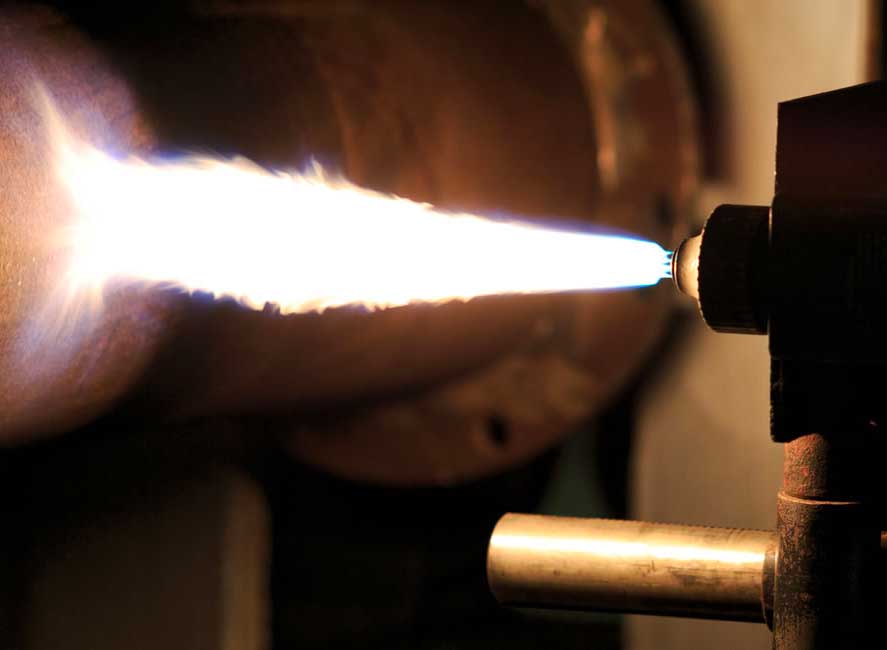Thermal spraying is the process by which a coating is applied to a material via the coating material being heated until it becomes molten and then being sprayed onto the substrate where it solidifies and bonds upon contact forming a stable and hard wearing coating. There are a number of advantages (along with some disadvantages) to thermal spray coatings which are detailed below.
Advantages of Thermal Spray
- Wide range of coating materials – there is a vast array of different materials which can be turned into high quality coatings via the thermal spray process. These can include; metal, alloy, ceramic, plastic, and polymer and can be in the form of powder, rod, or wire. The coating material can be specifically selected for each individual substrate and the job that it has to do and so a near perfect match can often be made between the two.
- Wise variety of substrate materials – as long as the material to be coated can withstand the heat of the thermal spray process then almost any material can be coated using this method. However, there are also a number of specific spray coating methods which in fact use much lower temperatures and so the range of substrate materials is even further increased.
- Extends the lifespan of the substrate – a strong and efficient thermal spray coating will extend the lifespan of that substrate by providing an effective barrier against erosion, decomposition and other forms of surface damage. Thermal spraying allows much thicker coatings to be applied (typically up to 10 mm) in higher deposition rates than other coating methods, which provide a much more effective barrier against wear and tear.
- Reduced cost – in many cases repairing an object by applying a thermal spray coating to it is much cheaper than completely replacing it. Also, thermal spray coatings tend to be much more efficient and waste less of the coating material than with other methods so are a much more viable option when more expensive coating materials are involved.
Disadvantages of Thermal Spray
- Disguises the substrate – as thermal spray is so efficient in many cases it is impossible to tell what material the substrate was made of after the coating process, unless stringent records are kept. For more info contact Green Leaf Business Solutions here.
- Cannot precisely evaluate effectiveness – once the thermal spray coating has been applied it is often difficult to tell exactly how well the coating has gone on, other than by a visual assessment.
- Costly set up – some methods of thermal spray coatings require very expensive apparatus, which can result in a high initial set up cost.
To find out more about the thermal spraying process and how it could be applied to your business or field contact the experts at IRS Ltd today.

